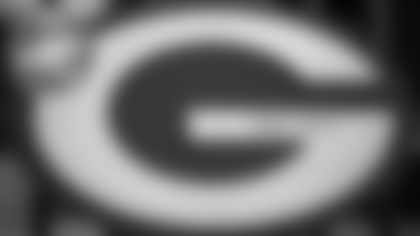Steve from the United Kingdom
Hi Cliff, I absolutely love your work. It has certainly added to my experience as an overseas Green Bay Packers fan and deepened my knowledge and affection for the team. I'm assuming, given the lack of information I can find on the subject, that this fact is either wrong or obscure but I'm keen to find out which it is. Having seen an article about most pass yards in a single Packers season, I became curious about Lynn Dickey and the 1983 season. I wondered how a quarterback who threw for nearly 4,500 yards in that era somehow didn't manage a winning record. Scrolling down through Wikipedia I noticed this little nugget: "NFC Central record, Most Interceptions in a Season by a passer other than the quarterback (3, Cliff Lewis)." Lewis is listed as a linebacker so I'm wondering how he managed to throw three interceptions. Was it a special-teams play? How could Bart Starr let it go wrong three times in one season?
Thanks for sharing your insight into what it's like being a fan from our expanding base beyond the boundaries of the United States. That's why I copied your entire email, kudos and all.
In response, I'm going to first issue an All Call to Packers fans everywhere! Please don't trust much of anything you find about Packers history on Wikipedia. And I'm referring to all of its sites: our team history, those devoted to individual players, coaches, stadiums – you name it.
When it comes to Packers history, Wikipedia is like a book full of April Fool's jokes.
As a quick example, I made a copy of its Green Bay Packers site sometime in the last year and found six factual mistakes in the first 16 sentences. That's almost an error every other sentence – and they don't stop flowing.
I just looked at Don Hutson's page. Under the "NFL career" sub-title, there was a mistake in five of the first eight sentences. On Curly Lambeau's page, they credited me as the source for two of the first six citations and yet both included misinformation that doesn't accurately reflect what I've written.
Despite knowing full well how irresponsible Wikipedia is when it comes to retelling Packers history, I was utterly dumbfounded when I uncovered what you did about Cliff Lewis at one of its sites. Unbelievable! Yes, Lewis was a linebacker and played special teams for the Packers from 1981-84. But during those four seasons, he never attempted a pass, much less throw three interceptions.
As to why the Packers finished 8-8 in 1983, despite Dickey's 4,458 passing yards, still the second-highest total in team history behind Aaron Rodgers' 2011 number of 4,643, there were many reasons.
The defense hit rock bottom because of some horrendous personnel decisions, which I recently addressed in this post.
Offensively, the Packers scored more than 40 points four times and had two other games of more than 30. When Dickey and the rest of the offense was on their game and nullified the opponent's pass rush, they were as explosive as any Packers team I've witnessed.
As for Dickey's tools as a passer, he belongs in the same conversation as Brett Favre, Rodgers and Jordan Love. In fact, from a clean pocket, Dickey might have thrown a better deep ball and deep out than any of them. But his biggest shortcoming was his lack of mobility, at least partly because of two devastating leg injuries as a young pro. Thus, Dickey was never a threat to turn a broken play into a big play. And as you perhaps have witnessed that has been a big part of Favre's, Rodgers' and Love's game.
While throwing for league highs of 4,458 yards, 32 TDs and 9.2 yards per attempt, Dickey also was sacked 40 times and threw a league-high 29 interceptions, many if not most of them likely under duress. In the final 1983 NFL stats, the Packers finished second in total offense and passing yards but 21st in rushing yards.
Nellie from San Diego, CA
At the Wisconsin Historical Society website, it provides information for "This Day in History." On April 24, 2024, it stated that Mike Michalske "also played professional baseball for the New York Yankees in 1927-28, before joining the Packers." Did he play football or baseball for the Yankees in 1927-28?
The answer is football. The Historical Society got it wrong. Worse yet, they cited our website as their source for their information. Clearly, we've got it right in our Mike Michalske Packers Hall of Fame bio.
Michalske played for the New York Yankees of the American Football League, the league built around Red Grange by his agent, "Cash and Carry" Pyle, in 1926. The Yankees then joined the National Football League in 1927 – even playing that year against the Packers minus an injured Grange at old City Stadium before what was a club-record crowd of 11,000 – and lasted two seasons before folding. Michalske never played pro baseball. Michalske's 1927-28 seasons with the NFL Yankees are credited to his pro football record, and more than likely in every pro football encyclopedia and credible website about NFL history. Because the 1926 AFL season is not recognized by the NFL, Michalske isn't credited for it in record books.
Dan from Minneapolis
Let me start by saying I enjoy your columns. Both the Packers organization and Packers fans everywhere are lucky to have someone with your extensive knowledge of Packers history, augmented by the thoroughness of your research. I have never written to any of the writers at packers.com, but your response to a reader's question on post-draft grades resonated with me. I have long felt the same about NFL draft pundits. I'm going to share the body of an email I sent to a friend on Jan. 3, 2008, regarding the 2005 draft. This friend had emailed me immediately following the 2005 draft with concerns about the mediocre grades the pundits were giving to the Packers. He was doubly concerned because many of the same pundits were lauding the Vikings for their great draft. I don't expect a response to this email. I was just moved to share it because it echoes your response to Ike from Fargo.
First, thanks for the kind words, but I need to apologize for turning this post into a pat-on-the-back fest by including the compliments that have accompanied the questions. Normally, I skip those.
But I didn't in your case because I want to assure you that the appreciation is mutual. To you and others thanks for being loyal readers. What's more, good questions and astute feedback, as you've offered here, are critical to making my engagement with readers worth your time.
As an FYI, I wish I was able to answer even more questions because they are plentiful and typically good ones. But it's just not feasible if I'm going to continue my research efforts. That said, please, as a general request, make sure your first name and hometown are included with your questions. And if you've submitted a question within the last year that hasn't been answered and think you might not have included that information, send a follow-up email and I should be able to find the original question.
As for the information you provided, I can't post all the links. But I'll post the grades that you found and passed on for the 2005 draft.
Dr. Z, Sports Illustrated: Vikings A, Packers B- (conditional based on Aaron Rodgers)
Pete Prisco, CBS Sports: Vikings A, Packers C
Pro Football Weekly: Vikings A, Packers B-
Mel Kiper, ESPN: Vikings B+, Packers C
Charles Robinson, Yahoo Sports: Vikings A+, Packers C
In the event any of you have forgotten, the Packers drafted Rodgers with the 24th overall choice that year, which means it was a great draft regardless of what any other player accomplished.
But beyond that, second-round choice Nick Collins of Bethune-Cookman started 16 games as a rookie and all but three over his first six seasons, and was selected to the Pro Bowl in 2008, '09 and '10. He also made one of the biggest defensive plays in Packers history, his 37-yard interception return for a TD in Super Bowl XLV. There were members of the Packers personnel department and coaching staff who told me that they believed Collins was on his way to having a Pro Football Hall of Fame career and maybe even a better one than LeRoy Butler before a neck injury sidelined him in 2011.
Second-round wide receiver Terrence Murphy was another injury casualty, and fourth-round safety Marviel Underwood didn't pan out. But the Packers also got a three-year starter and special-teams production out of fourth-round linebacker Brady Poppinga and more than a minimal contribution from sixth-round defensive end Mike Montgomery.
As for the Vikings, those A and A+ players turned out to be seventh overall choice Troy Williamson (87 catches in three seasons as a sometimes starter at wide receiver), 18th overall pick Erasmus James (12 starts as a defensive end and five sacks in three years), second-round guard Marcus Johnson (18 starts in three seasons), third-round defensive back Dustin Fox (one year on IR and waived the next year), fourth-round running back Ciatrick Fason (0 starts, 161 yards rushing in two seasons before being cut) and seventh-round defensive back Adrian Ward (cut as a rookie).
Essentially, the Vikings had an all-bust draft except for sixth-round defensive tackle C.J. Mosley, not to be confused with the current New York Jets and former Baltimore Pro Bowl linebacker by the same name. The Vikings' Mosley had three sacks as a rookie but was traded the next summer to the New York Jets for quarterback Brooks Bollinger. Mosley wound up playing 11 years for six different teams. In all, he started 31 games and had 14 career sacks.
An ultimate journeyman, he was eventually waived by five of the six teams that he played for.
Dan, thanks again, for the valuable insight and another reminder of the absurdity of instant draft grades by people who aren't qualified to pass them out. Your example might be the most instructive of all.
Jeff from Oceanside, CA
There has been talk about the Packers being the only team with 10 MVPs. There also was talk about the Rams' Cooper Kupp possibly becoming the first wide receiver to win it. I know the history of the AP's award and that there have been multiple other entities to announce MVP selections. But my understanding is that the Joe F. Carr Trophy, which was awarded from 1938 to 1946, was the NFL's official MVP. And it is the only MVP actually sanctioned by the league. If so, why doesn't the NFL ensure those nine recipients are included in all the promotions of MVP history?
Great question, and I'm as puzzled as you as to why they aren't listed. As background for others, the Packers' 10 Associated Press MVPs have been Paul Hornung (1961), Jim Taylor (1962), Bart Starr (1966), Brett Favre (1995, '96, '97) and Aaron Rodgers (2011, '14, '20, '21).
Here's also the background on the Carr Trophy.
On July 22, 1939, a little more than two months after Carr's death, NFL owners during a meeting in Pittsburgh voted to adopt a resolution proposed by George Halas that the league's most valuable player award be designated as the Joe F. Carr Memorial Award. Carr was president of the league from 1921-39. During discussion, according to the official minutes of the meeting, Curly Lambeau spoke in support of the resolution and stated: "You are giving the award in the name of the man who has done more for professional football than any living man…"
Halas' motion stipulated that the voting would be conducted by the Professional Football Writers of America, and the results officially recognized by the NFL.
There was no gray area here. As you stated, the winner was recognized as the NFL's official MVP for nine years. All I'd note is that New York Giants center Mel Hein won the first award in 1938 before Carr's death, although he was still recognized as the league's official MVP based on the league minutes. The award just didn't carry the Carr name yet.
Again, as you stated, the award was issued through 1946, and the only two-time winner was Packers end Don Hutson in 1941 and '42. As a side note, I'd agree no wide receiver has ever been named league MVP, Hutson included. Based on everything I've read and been told by players of that era, Hutson lined up more like today's tight ends than wide receivers, despite his 180 pounds.
Here's something else to ponder. The minutes for the Jan. 18, 1952, session of that year's annual meeting show that Commissioner Bert Bell and the NFL owners agreed to support the work of Roger Treat in compiling the "Official National Football League Encyclopedia of Professional Football."
In 1952, in the first printing of Treat's record book, the winners of the Carr Trophy were listed with the notation that the award had been discontinued. Then in Treat's fifth revised edition in 1967, if not before, the Carr winners were still listed but also the winners of the Jim Thorpe Trophy, the MVP award first given in 1955. It was chosen by a vote of all league players. The Associated Press MVPs were yet to be recognized in what was still referred to as the league's "official encyclopedia."
Fast forward to last season and the 2023 NFL Record & Fact Book listed in its index: "Most Valuable Players, all-time…page 524." Turn to page 524 and the title over the page reads: "Associated Press NFL Most Outstanding/Valuable Players." The list starts with Jim Brown in 1957.
The NFL's treatment of its early history can be baffling at times, and the Packers seem to suffer the consequences more than any other team because of their rich history. And the omission of the Carr winners, when it was the only official MVP award ever sanctioned by the NFL, is another example. Inexplicably, Hutson isn't listed as a league MVP in what supposedly is the NFL's current record book.














